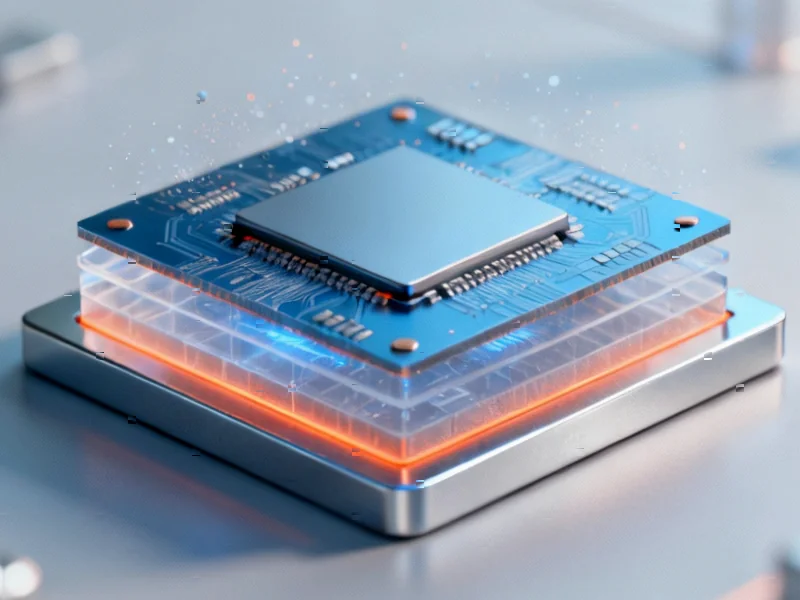Breakthrough in Automotive Cybersecurity
Researchers are proposing that microchip manufacturers adopt a new multi-layered, insulating design to protect vehicles from cyber-physical attacks, primarily from lasers, according to recent reports. The technology, developed through collaboration between the French Alternative Energies and Atomic Energy Commission and semiconductor manufacturer Soitec, represents a significant advancement in hardware-level security for modern vehicles.
FD-SOI Technology Explained
The proposed “Fully Depleted Silicon-on-Insulator” (FD-SOI) technology differs fundamentally from standard chip manufacturing approaches, sources indicate. Instead of placing transistors directly on silicon wafers, FD-SOI incorporates a multi-layered substrate featuring an insulating buried oxide (BOX) layer. This design isolates transistors from each other and the underlying base, creating inherent protection against sophisticated attack methods.
Analysts suggest this architecture specifically targets fault injection attacks, particularly laser fault injection (LFI), where attackers use focused laser pulses to induce temporary errors in transistor operations. According to the report, the BOX buffer in FD-SOI chips limits energy spread, forcing attackers to use significantly more laser power and time—extending typical attack durations from minutes to hours.
Real-World Attack Scenarios
Modern vehicles contain dozens to over 100 microcontroller units controlling everything from basic functions to critical systems. The report states that while most cyberattacks target information channels like infotainment systems, fault injection attacks bypass these entirely through physical means.
“Realistic scenarios are those where an adversary briefly controls the electronic control unit or telematics unit,” explains Philippe Flatresse, director of business development at Soitec. “This includes vehicles in service bays, stolen ECUs brought to testing benches, or supply-chain tampering.”
Industry experts note that while LFI attacks require nation-state-level resources and precision, they represent a growing concern as vehicles become more connected and automated. The technique can potentially affect silicon chips in various devices beyond automobiles, including drones and medical equipment, according to industry developments.
Regulatory Compliance and Cost Benefits
The timing of this technological advancement aligns with increasing global regulatory pressure. Since January 2021, UN Regulation No. 155 has required original equipment manufacturers to implement cybersecurity management systems across 54 countries. The regulation specifically addresses physical manipulation of electronic hardware, with fault injection attacks representing the most sophisticated end of this threat spectrum.
Beyond security benefits, analysts suggest FD-SOI technology offers cost advantages. The insulating layer reduces electrical noise, leakage, and overheating concerns that engineers typically must compensate for in other systems. This simplicity reportedly translates to more predictable manufacturing yields and lower overall costs compared to alternative technologies like FinFET used in some systems-on-chips.
Recent technology advancements in the semiconductor industry, including those documented in Soitec’s detailed presentation, highlight how security and efficiency can coexist in modern chip design. Meanwhile, related innovations in critical materials and market trends in industrial computing demonstrate the broader context of technological evolution.
Industry Implications
While FD-SOI technology isn’t “unhackable,” the report states it significantly raises the security bar by breaking the substrate paths that faults typically exploit. This approach aligns with what regulators and safety programs currently need, according to the analysis.
The automotive cybersecurity landscape continues to evolve alongside other industry developments in computing and data security. As vehicles incorporate more advanced features and connectivity, hardware-level security measures like FD-SOI may become standard requirements rather than optional enhancements, particularly as governments worldwide address clean energy and transportation security simultaneously.
The research collaboration between French scientific institutions and private industry, including entities associated with French political movements that support technological innovation, demonstrates the global nature of automotive cybersecurity challenges and solutions.
This article aggregates information from publicly available sources. All trademarks and copyrights belong to their respective owners.
Note: Featured image is for illustrative purposes only and does not represent any specific product, service, or entity mentioned in this article.



